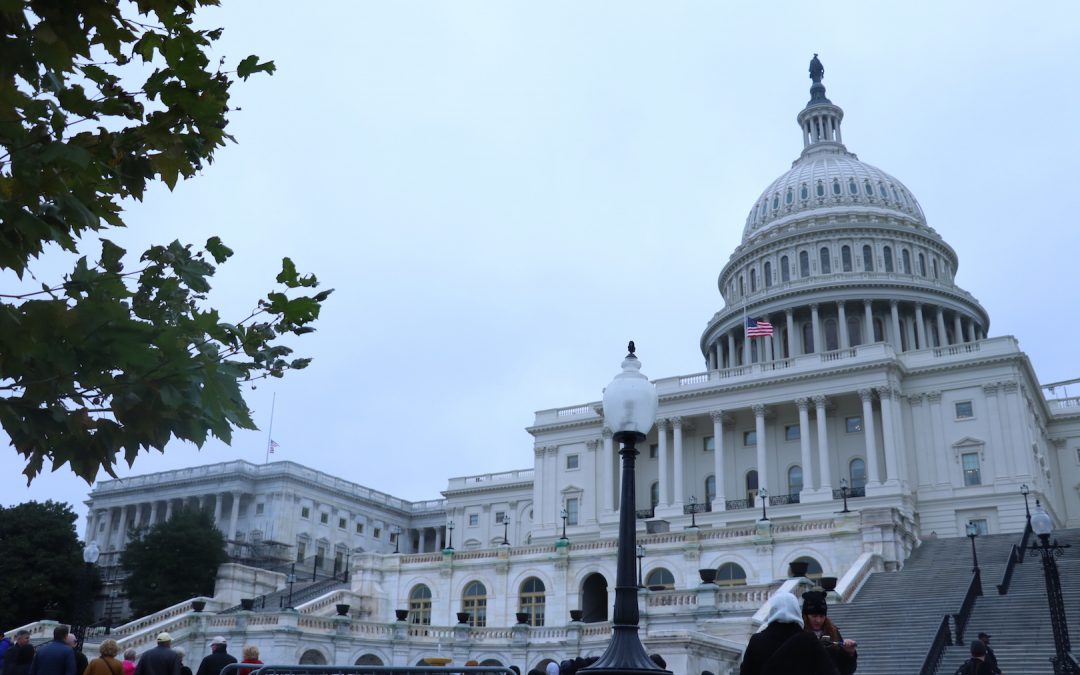WASHINGTON— As a partial government shutdown on Friday night becomes increasingly likely, federal agencies and employees are bracing for its effects that could result in the shuttering of many agencies, the furloughing of more than 800,000 federal employee and a disruption in government services and benefits.
It is still possible Congress and the White House can dodge a shutdown with a last-minute agreement. However, as the Senate debates a short-term spending bill to keep the government afloat, Democrats continue to hold out for major concessions including the protection of nearly 700,000 children of undocumented immigrants from deportation.
This would be the first government shutdown in more than four years, when Republican lawmakers forced a 16-day shutdown to block funding for the Affordable Care Act during the Obama administration. If no deal is reached before midnight tonight, the nation will be treated to the first shutdown while a single party controlled both chambers of Congress and the White House.
With the deadline fast approaching for a possible government shutdown, here are nine important consequences of the government closing:
No DACA Immigration Fix
Nearly 700,000 children of undocumented immigrants will continue to live under the fear of a loss of work permits and deportation unless Congress strikes a last-minute deal with President Donald Trump to extend protection to them. Trump announced plans to end the Deferred Action for Childhood Arrivals program in March unless Congress approved legislation to allow the so-called “Dreamers” to remain in the country.
Republicans are insisting that the issue be put off while Congress approves another short-term spending resolution, but Democrats say they won’t go along with more spending authority unless the DACA issue is addressed.
Funding for the Children’s Health Insurance Program Would Expire
The resolution passed by the House Thursday evening to temporarily extend funding authority includes a six-year extension of the CHIP program, which provides healthcare for nearly nine million children in the U.S. Along with delays in implementing Obamacare-related taxes, the CHIP funding provision was included to attract Democratic support. Funding expires at midnight tonight for the program that benefits low-income families who do not qualify for Medicaid.
Many Federal Workers Would Be Placed on Leave
There are currently an estimated 2.1 million federal civilian employees, and more than 800,000 federal workers were indefinitely furloughed during the last government shutdown in 2013. “Non-essential” employees in the Department of Education, Defense Department, Pentagon, Transportation Department, Veterans Administrations, and others would be furloughed until government funding is re-enacted.
Museums, Parks and Other Government Facilities Could Close
The 417 national park sites, Smithsonian museums, and federal offices are in jeopardy of closing, although the Smithsonian has confirmed that its museums will stay open through the weekend but close on Monday. Department of the Interior spokesperson Heather Swift said Thursday that “National Parks and other public lands will remain as accessible as possible while still following all applicable laws and procedures.” National Parks lost roughly $500 million in revenue during the 2013 shutdown.
Defense Funding Will Be Preserved
The U.S. Armed Forces – especially those in combat zones – would still report for duty, but their pay would expire by February 1 if legislation to continue funding does not pass by then. Congress would likely approve funds later in the year to compensate many soldiers and civilians for lost pay. A shutdown would also mean death benefits could not be received by families of military members killed in the line of duty.
On Thursday, the hardline House Freedom Caucus voted in favor of the continuing resolution after striking a deal with House Speaker Paul Ryan, R-Wis., , who promised a vote within the next 10 legislative days on a bill that will raise budget caps for defense spending to roughly $80 billion.
Government Services Would Be Curtailed
Medicare, Medicaid and Social Security checks would still be issued during normal business days under a shutdown, but the IRS would take a big hit at a time when the agency is attempting to implement new procedures following December’s tax overhaul. Some 56 percent of the agency’s workforce would be sent home, while information on tax returns and inquiries from taxpayers would not be available. Nearly $4 billion in tax refunds were delayed in 2013 due to lack of staffing at the IRS.
Threats to Public Health Care
In 2013, the Center for Disease Control halted the majority of its annual influenza program during the shutdown. This year marks one of the largest flu outbreaks in recent history, and a shutdown would cripple the agency from being able to track disease outbreaks.
At the Food and Drug Administration, federal food safety inspectors — who oversee roughly 80 percent of the nation’s food supply — would be furloughed. The National Institute of Health will still care for patients in its infectious diseases division, but new patients would be turned away.
A Hit to the Economy
A report by S&P Global analysts released in December predicted a shutdown would cost the nation $6.5 billion a week, triggered by a halt in spending as a result of no government paychecks. Some economists estimate that up to one percent of GDP growth would be adversely affected if a shutdown would last longer than two weeks.
Midterm Election Consequences
With the 2018 mid-term congressional elections months away, Democrats in red states are especially concerned about securing their seats in both the Senate and the House. Voting along party lines for a shutdown could be detrimental to their campaigns and voting against party wishes could alienate them in Congress.
When Republicans forced a government shutdown in 2013 over the Affordable Care Act, public opinion of the party dramatically dropped, although the GOP came back and won big in the 2014 midterm elections.

